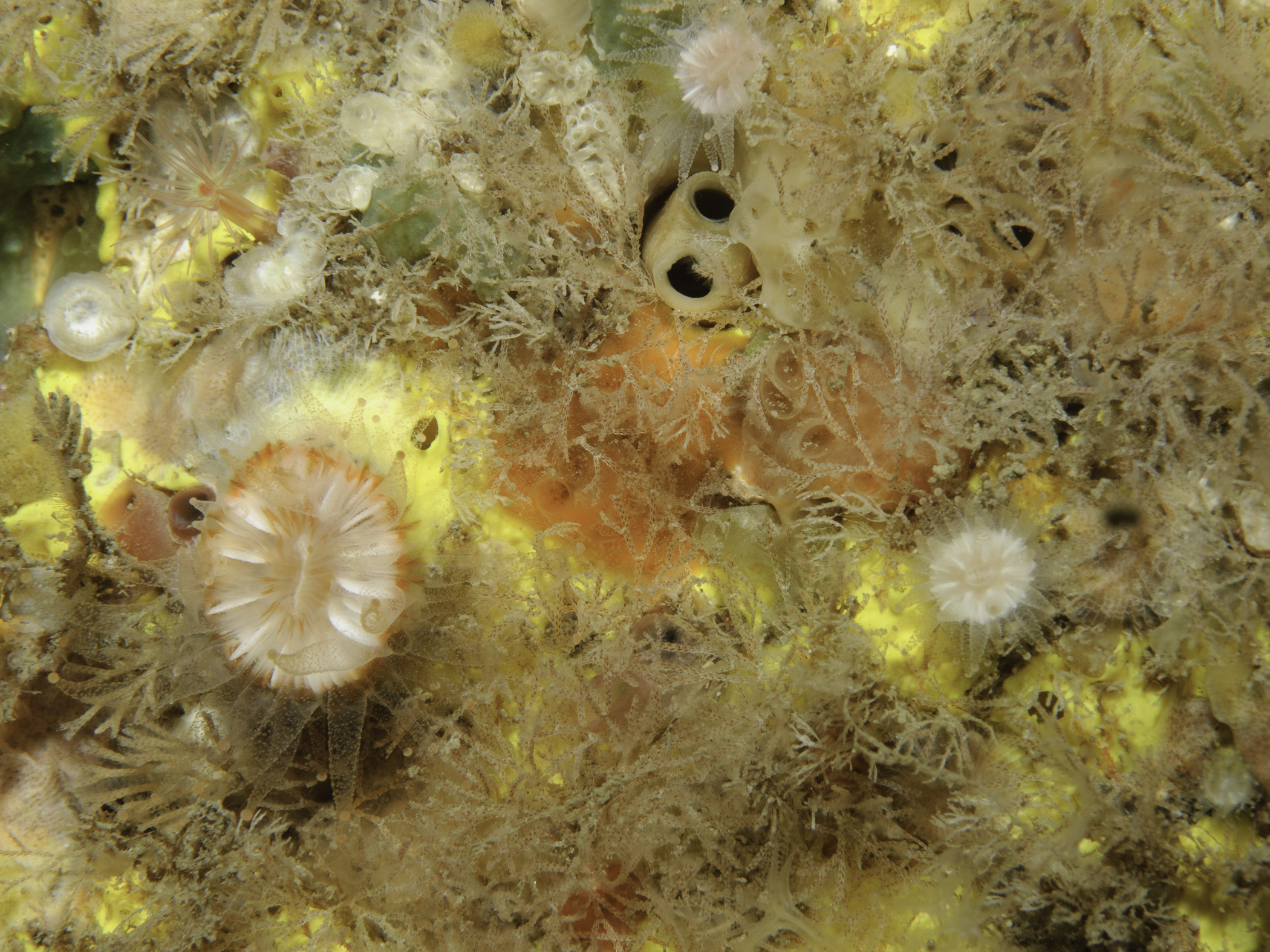| CNIDARIA : Scleractinia : Caryophylliidae | SEA ANEMONES AND HYDROIDS |
Caryophyllia inornata Duncan, 1878
 |
| Caryophyllia inornata |
Description: This cup-coral is similar to the common devonshire cup-coral but much rarer in Britain and Ireland. It is smaller, typically 5-7mm in diameter, but taller in proportion to its diameter. The skeleton is distinguished by septa which extend outside the line of the corallum at the top. These septa are easily seen in contracted living individuals. The living polyps are translucent white in colour, with short knobbed tentacles.
Habitat: Usually found on vertical or overhanging rockfaces, often in small groups. May also occur in small caves where it is out of the light.
Distribution: Rare in Britain and Ireland, with recent records from Lundy Island in the Bristol Channel, Skomer Island in Pembrokeshire, Lough Hyne in SW Ireland, Rathlin Island in NE Ireland and Ardnoe Point in the Sound of Jura, SW Scotland. Elsewhere it is a frequent species in the Azores and occurs along the Atlantic coasts of France, Spain and Portugal and the Mediterranean Sea.
Similar Species: This cup-coral looks most like a Jewel Anemone, Corynactis viridis, when alive. It could easily be mistaken for a small Devonshire cup-coral, Caryophyllia smithii.
Key Identification Features:
- Small solitary cup-coral, taller than diameter
- Corallum parallel-sided with protruding septa at rim
- Colourless animal with short tentacles which have prominent knobbed tips
Distribution Map from NBN: Caryophyllia inornata at National Biodiversity Network mapping facility, data for UK.
iNaturalist: Caryophyllia inornata at iNaturalist World Species Observations database.
GBIF data for Caryophyllia (Caryophyllia) inornata
WoRMS: Caryophyllia inornata at World Register of Marine Species. Accepted name: Caryophyllia (Caryophyllia) inornata (Duncan, 1878). AphiaID: 135141.
Classification: Biota; Animalia; Cnidaria; Anthozoa; Hexacorallia; Scleractinia; Vacatina; Caryophylliidae; Caryophyllia
| Previous species | Next species |
| Picton, B.E. & Morrow, C.C. (2024). Caryophyllia inornata. Duncan, 1878. [In] Encyclopedia of Marine Life of Britain and Ireland. https://www2.habitas.org.uk/marbiop-ni/speciesaccounts.php?item=D13710. Accessed on 2025-04-04 |
